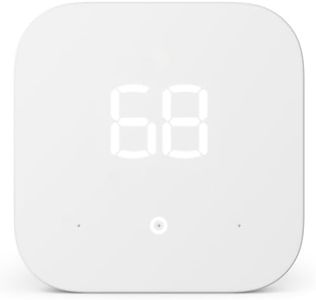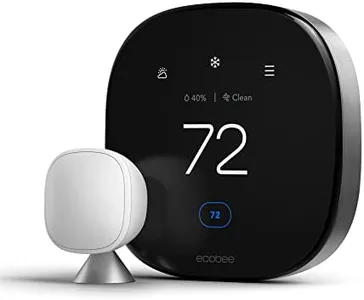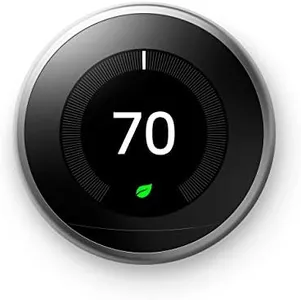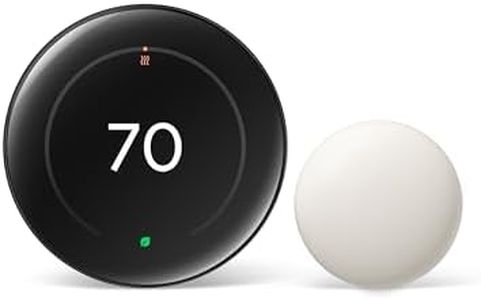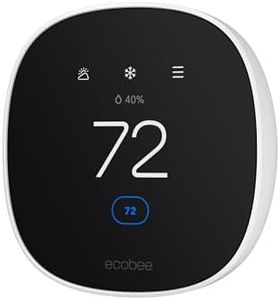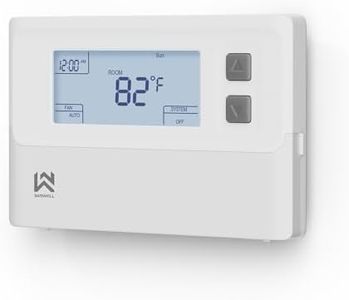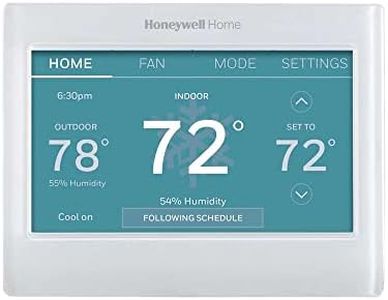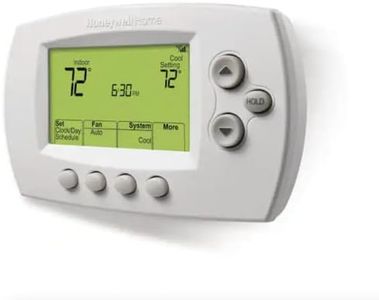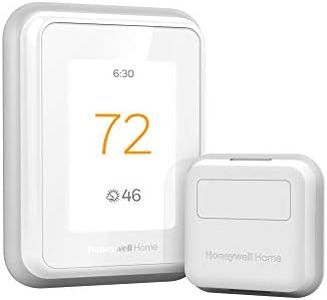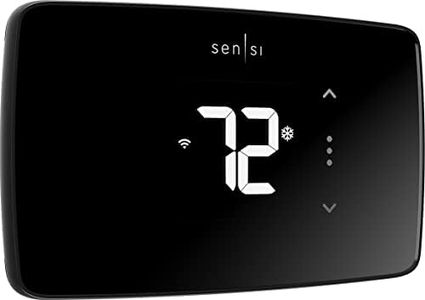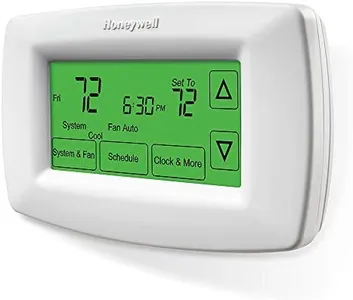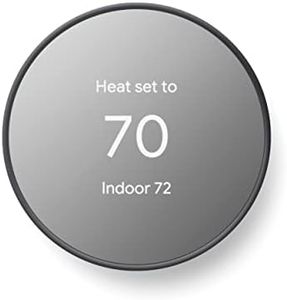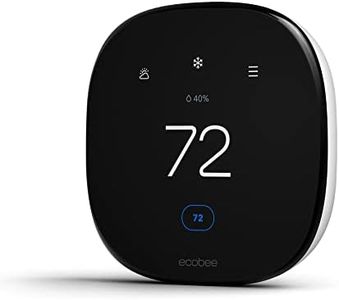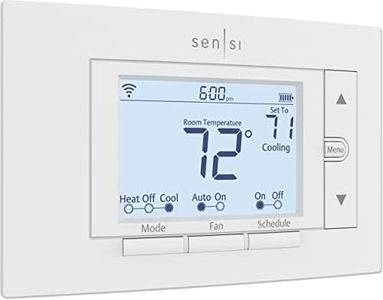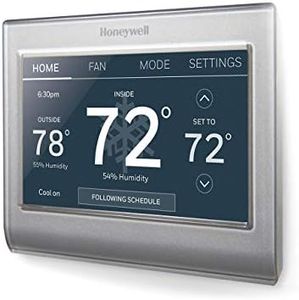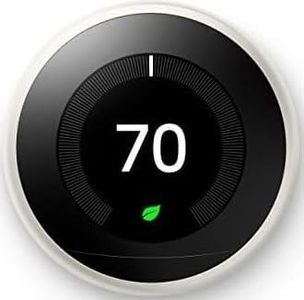10 Best Smart Thermostats 2025 in the United States
Our technology thoroughly searches through the online shopping world, reviewing hundreds of sites. We then process and analyze this information, updating in real-time to bring you the latest top-rated products. This way, you always get the best and most current options available.

Our Top Picks
Winner
Amazon Smart Thermostat – Save money and energy - Works with Alexa and Ring - C-wire required
Most important from
25449 reviews
The Amazon Smart Thermostat is a solid choice for anyone looking to upgrade from a traditional thermostat to a smart option that helps save money and energy. One of its key strengths is its compatibility with Alexa and Ring, which allows for easy voice control and integration into your smart home ecosystem. The thermostat’s learning capabilities are impressive; it can adapt to your schedule and preferences over time, optimizing temperature settings automatically based on your presence at home. The energy-saving features, including potential rebates from energy providers, make it appealing for those looking to lower utility bills.
Installation is designed to be user-friendly, with guidance available through the Alexa app, making it accessible even for those who might not be particularly handy. The ability to monitor energy usage and receive automatic reminders for air filter replacements adds another layer of convenience.
There are some limitations to consider. The requirement for a C-wire for installation might be a hurdle for some users, particularly in older homes where this wiring isn’t always standard. It's also worth noting that while it works with 2.4 GHz networks, it does not support 5GHz connections, which may limit compatibility with some modern routers. Additionally, while the thermostat can work with temperature sensors through compatible Echo devices, it does not include a built-in microphone, meaning you will need to rely on an Alexa-enabled device for voice commands. The reliance on the Alexa app for many features may also deter those who prefer a more standalone experience.
Most important from
25449 reviews
ecobee Smart Thermostat Premium with Smart Sensor and Air Quality Monitor - Programmable Wifi Thermostat - Works with Siri, Alexa, Google Assistant
Most important from
3244 reviews
The ecobee New Smart Thermostat Premium is a versatile option for anyone looking to upgrade their home climate control system. Its standout feature is the SmartSensor, which optimizes the temperature in key rooms and helps eliminate hot or cold spots. Additionally, the built-in air quality monitor is a nice touch, providing alerts and tips to maintain a healthy living environment. Compatibility is broad, supporting most 24VAC HVAC systems, and the included Power Extender Kit makes it easier to install in homes without a C-wire.
Integration with Siri, Alexa, and Google Assistant ensures seamless control via voice commands, and the option to use it as a smart speaker adds value. The ability to save up to 26% on heating and cooling costs is particularly appealing for those focused on energy efficiency. However, some features, like advanced security notifications and geofencing, require subscriptions to ecobee's Smart Security plan. Also, while the Siri functionality is handy, it does require an Apple home hub.
The design is visually appealing with a vibrant display and modern look, but the installation might be a bit daunting for those not familiar with electrical work. Despite these caveats, the ecobee New Smart Thermostat Premium offers a robust set of features that should satisfy most smart home enthusiasts.
Most important from
3244 reviews
Google Nest Learning Thermostat - 3rd Gen (2015) - Programmable Smart Thermostat for Home - Works with Alexa - Stainless Steel
Most important from
39131 reviews
The Google Nest Learning Thermostat - 3rd Gen is a standout option in the smart thermostat category, particularly for those looking to enhance their home’s energy efficiency and comfort. Its Auto-Schedule feature allows it to learn your temperature preferences over time, eliminating the need for complex programming, making it user-friendly. The Home/Away Assist is a fantastic addition, as it automatically adjusts settings when you leave, ensuring that energy isn't wasted heating or cooling an empty home.
Remote access through the Nest app gives you control from anywhere, which is really convenient. Plus, the energy reports let you track usage patterns, helping you understand where you can save money on energy bills. The Nest Leaf feature encourages energy-saving choices, promoting eco-friendly habits.
Compatibility is another strong point, as it works seamlessly with Google Assistant and Amazon Alexa, allowing for voice control and integration into your smart home system. The installation is straightforward for most users, but it’s always wise to check compatibility with your heating and cooling system beforehand. Some users may find limitations in its compatibility with certain older HVAC systems. While the price point is reasonable for a smart thermostat, it may still be higher than basic models, which could be a consideration for budget-conscious buyers.
Most important from
39131 reviews
Buying Guide for the Best Smart Thermostats
Choosing the right smart thermostat can significantly enhance your home's comfort and energy efficiency. Smart thermostats allow you to control your home's heating and cooling systems remotely, learn your preferences, and even save you money on energy bills. To find the best fit for you, it's important to understand the key specifications and how they align with your needs.FAQ
Most Popular Categories Right Now
